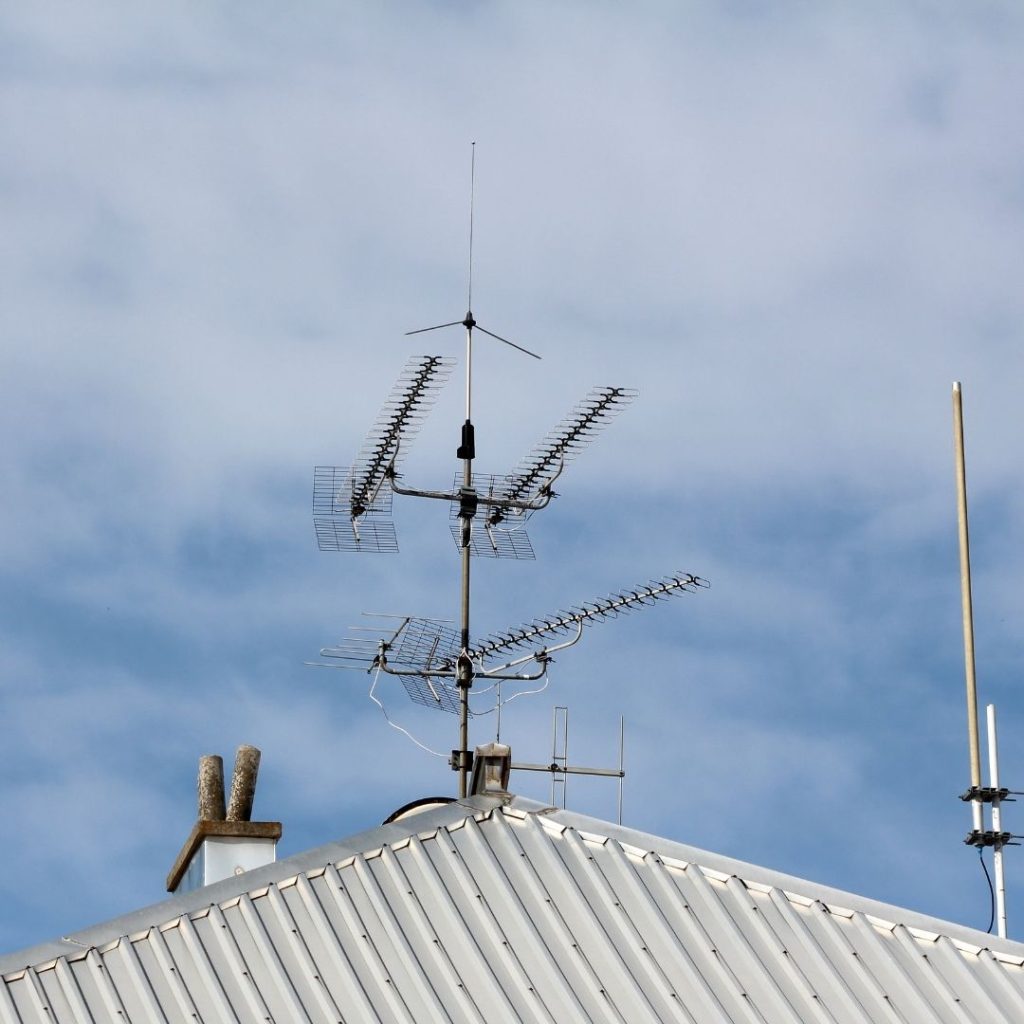Metal roofing is celebrated as one of the most durable and long-lasting roofing solutions available in Australia. Its remarkable strength, exceptional durability, and energy efficiency are key attributes that make it a top choice for homeowners. However, one prevalent concern that many homeowners have is — do metal roofs attract lightning?
With an increasing number of homeowners opting for Starlink dishes and various aerial devices, the worries regarding lightning strikes have also risen. This article will explore the facts surrounding this issue, illustrating why metal roofing, in conjunction with antennas and satellite systems, is often safer than many people might think.

Does Metal Roofing Attract Lightning Strikes? Understanding the Facts
Contrary to the common belief that metal roofs attract lightning, the reality is quite different. A metal roof does not attract lightning. In fact, lightning is drawn to the highest point in any landscape and is not influenced by the material of the roof itself. Lightning follows the path of least resistance to reach the ground, which is why it typically targets taller structures like trees, poles, or antennas rather than the roofing material itself.
In the unfortunate event that a home with a metal roof is struck by lightning, the reassuring truth is that metal effectively disperses energy in a safe manner. Unlike roofing materials such as tile or wood, metal is not easily ignited or burned. If lightning were to strike, the electrical charge spreads rapidly across the surface of the roof and harmlessly dissipates into the ground, especially when the grounding system of the building is installed correctly.
In conclusion, choosing a Colorbond® roof does not increase the likelihood of your home being struck by lightning. However, in the event of a strike, having a metal roof is indeed one of the safest options available, providing homeowners with significant peace of mind regarding their safety.
Do Aerials or Starlink Dishes Heighten the Risk of Lightning Strikes?
Similarly to metal roofs, aerials, antennas, and Starlink dishes do not inherently attract lightning simply by being present. Instead, lightning is primarily attracted to height and isolation, not specifically to the metallic components of these devices.
If an aerial or dish becomes the highest point on your property, it may become the most likely target for a lightning strike. This is due to its elevated position, not its metallic composition. Thus, it is essential to recognize that the risk of a lightning strike is mainly determined by location rather than the materials used in construction.
To enhance safety, consider implementing the following best practices:
- Ensure that the dish or antenna is professionally installed and grounded in accordance with the AS/NZS 1768 lightning protection standards.
- Bonding and grounding the system is critical, as this allows any electrical surge to travel safely to the earth, greatly reducing the risk of damage to your equipment or home.
- Avoid using isolated, ungrounded poles that rise significantly above the roofline, as these can pose a greater risk of lightning strikes.
When installed correctly, a Starlink dish or roof-mounted aerial on a Colorbond® roof remains completely safe, even during severe electrical storms.

Uncovering the Safety Advantages of Metal Roofing Materials
Beyond the critical concern of lightning safety, metal roofing offers a wide range of inherent protective features that make it an exceptional choice for homeowners:
- Fire Resistance: Metal is fundamentally non-combustible, making it an ideal choice for areas prone to bushfires.
- Storm Durability: Metal roofs are engineered to endure hail, strong winds, and heavy rainfall significantly better than many traditional roofing materials.
- Corrosion Protection: Colorbond® coatings provide outstanding protection against rust, even in coastal regions where salty air can be problematic.
- Energy Efficiency: Reflective coatings on metal roofs help reduce heat absorption during hot summer months, leading to decreased energy bills.
- Structural Lightness: Metal roofing is lighter than tile, which reduces stress on the roof frame and enhances overall structural integrity.
Essential Maintenance Steps for Ensuring Roof Safety and Efficiency
To guarantee complete reassurance regarding the safety of your roof and any mounted equipment, conducting regular inspections is vital:
- After storm events, examine flashings, fixings, and sealants to ensure they remain intact and functional.
- Keep gutters and valleys clear of debris to prevent overflow and potential water damage to your property.
- Verify that any antenna installations are properly grounded to minimize risk and ensure safety.
AWS Roofing offers professional inspections and roof replacements throughout the Central Coast, Newcastle, and Hunter regions, ensuring that each roof operates safely and efficiently while providing maximum protection for your home.

Key Insights on Metal Roof Safety and Performance
A metal roof does not attract lightning; in fact, it plays a crucial role in protecting your home from lightning strikes. When paired with professional installation and proper grounding of any roof-mounted equipment, a Colorbond® metal roof stands out as one of the safest, most reliable, and long-lasting roofing systems available in Australia.
If you seek expert help for metal roofing installation or replacement, reach out to AWS Roofing, trusted professionals in durable and compliant roofing systems throughout NSW.
Do Metal Roofs Attract Lightning? (And Aerials or Starlink Dishes)
The Article: Do Metal Roofs Attract Lightning? A Look at Aerials and Starlink first appeared on https://writebuff.com
The Article Metal Roofs and Lightning: Insights on Aerials and Starlink Was Found On https://limitsofstrategy.com

